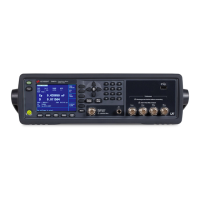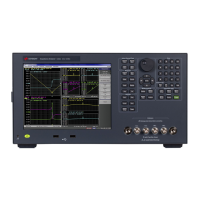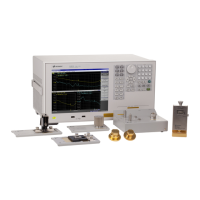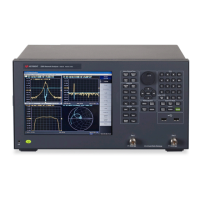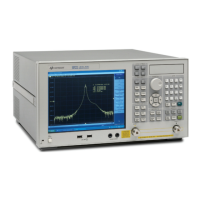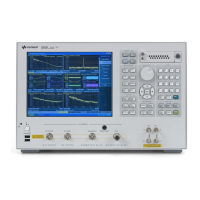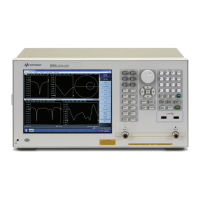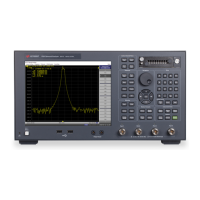-478 Keysight E4980A/AL User’s Guide
Handler Interface
Electrical Characteristics
-
Electrical Characteristics
As described in the previous section, some signals have different meanings
depending on whether they are used for the comparator or the list sweep
comparator. However, all the signals always retain the same electric
characteristics regardless of how they are used. The following descriptions
apply both when the handler interface is used with the comparator and when it
is used with the list sweep comparator.
DC Isolation Output Signals
DC isolation output signals (pins 1 to 11, 19 to 24, and 29 to 31) are output
from an open collector photocoupler. This output signal is obtained as a
voltage over a pull-up resistor that is mounted on the handler interface board.
The output voltage is jumper-switchable between the internal power supply
(+5 V, +12 V) and the external power supply (+5 to +24 V for EXT.DCV1 or +5 to
+24 V for EXT.DCV2).
The DC isolation output signals use their dedicated electrical system
independently of the control output signals. Therefore, the handler board has
two separate circuit common lines: COM1 and COM2.
Table E-13 shows the electrical characteristics of the DC isolation output
signals.
Table E-7 Electrical characteristics of the DC isolation output signals
Output Signals Voltage output rating Maximum
current
Circuit common
LOW HIGH
Test result output signals
/BIN1 to /BIN9
/AUX_BIN
/OUT_OF_BINS
/PHI
/PLO
/SREJ
/OVLD
0 to 0.5 V
DCV1
1
6 mA When internal pull-up
voltage is used:
Circuit common of
E4980A/AL
When external voltage
(EXT.DCV1) is used:
COM1
Control output signals
/INDEX
/EOM
/ALARM
/READY_FOR_TRIGGER
0 to 0.5 V
DCV2
2
6 mA When internal pull-up
voltage is used:
Circuit common of
E4980A/AL
When external voltage
(EXT.DCV2) is used:
COM1
1.
+5 V or +12 V when internal power supply is used.
+5 V to +24 V (EXT.DCV1) when external power supply is used.
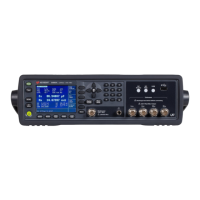
